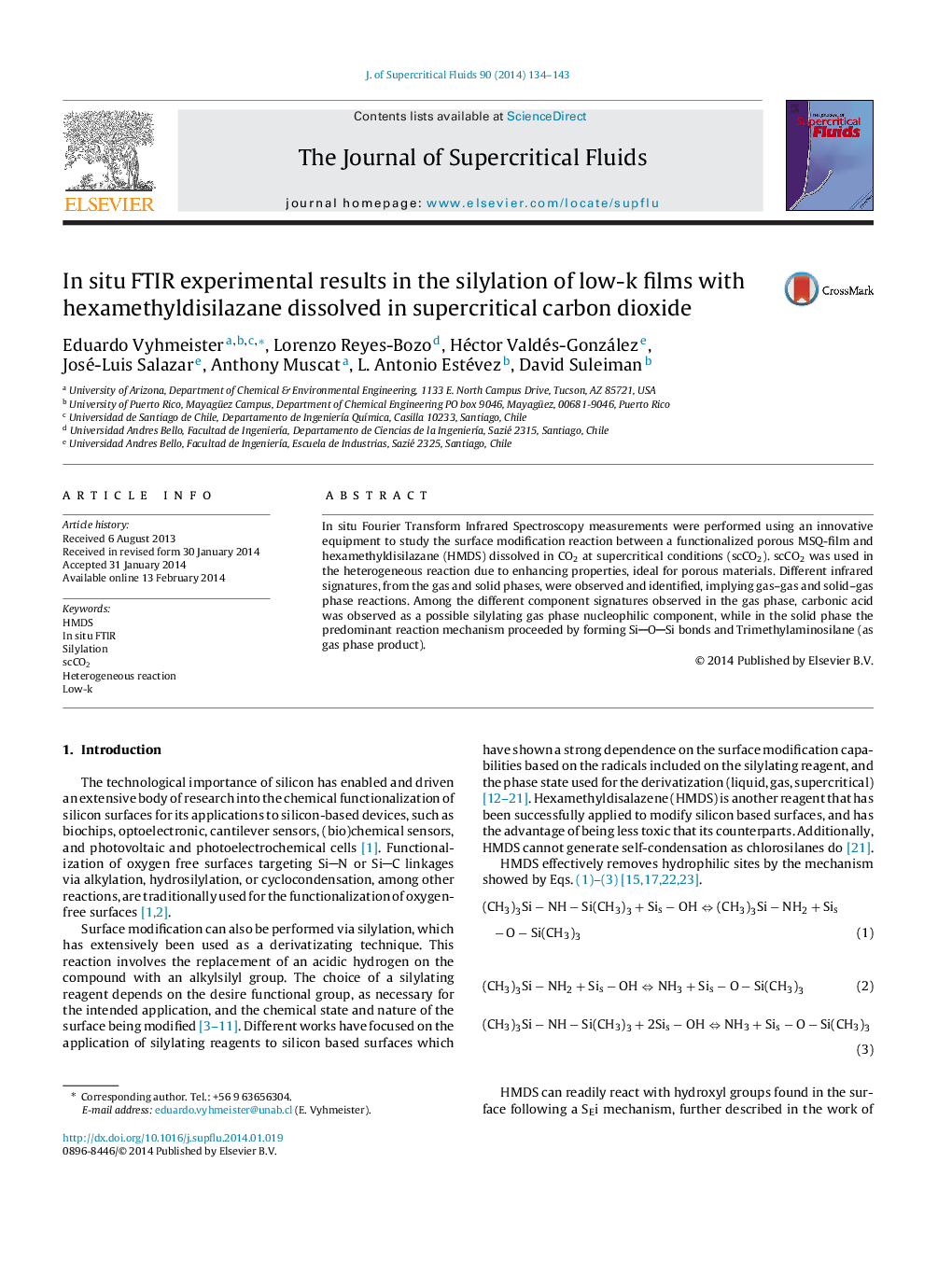| Article ID | Journal | Published Year | Pages | File Type |
|---|---|---|---|---|
| 230518 | The Journal of Supercritical Fluids | 2014 | 10 Pages |
•In situ FTIR experimental design and results of functionalization of low-k films.•Carbonic acid formation by interaction of water and CO2 at supercritical conditions.•HMDS followed a preferential mechanism of a monosubstitutional reaction.
In situ Fourier Transform Infrared Spectroscopy measurements were performed using an innovative equipment to study the surface modification reaction between a functionalized porous MSQ-film and hexamethyldisilazane (HMDS) dissolved in CO2 at supercritical conditions (scCO2). scCO2 was used in the heterogeneous reaction due to enhancing properties, ideal for porous materials. Different infrared signatures, from the gas and solid phases, were observed and identified, implying gas–gas and solid–gas phase reactions. Among the different component signatures observed in the gas phase, carbonic acid was observed as a possible silylating gas phase nucleophilic component, while in the solid phase the predominant reaction mechanism proceeded by forming SiOSi bonds and Trimethylaminosilane (as gas phase product).
Graphical abstractFigure optionsDownload full-size imageDownload as PowerPoint slide
